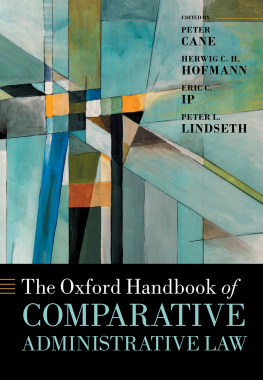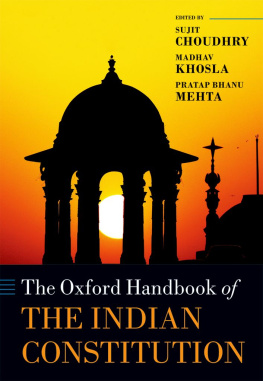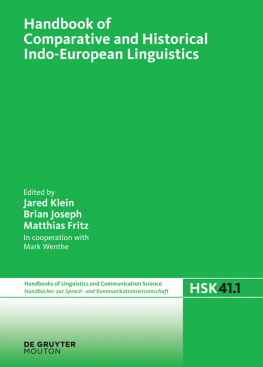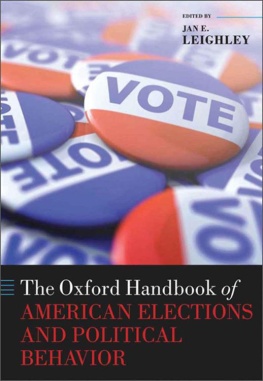
- Great Clarendon Street, Oxford ox 2 6 dp
- Oxford University Press is a department of the University of Oxford.
- It furthers the University's objective of excellence in research, scholarship,
- and education by publishing worldwide in
- Auckland Cape Town Dar es Salaam Hong Kong Karachi
- Kuala Lumpur Madrid Melbourne Mexico City Nairobi
- New Delhi Shanghai Taipei Toronto
- Argentina Austria Brazil Chile Czech Republic France Greece
- Guatemala Hungary Italy Japan Poland Portugal Singapore
- South Korea Switzerland Thailand Turkey Ukraine Vietnam
- Oxford is a registered trade mark of Oxford University Press
- in the UK and in certain other countries
- Published in the United States
- by Oxford University Press Inc., New York
- The various contributors, 2006
- The moral rights of the author have been asserted
- Database right Oxford University Press (maker)
- Crown copyright material is reproduced under Class Licence
- Number C01P0000148 with the permission of OPSI
- and the Queen's Printer for Scotland
- All rights reserved. No part of this publication may be reproduced,
- stored in a retrieval system, or transmitted, in any form or by any means,
- without the prior permission in writing of Oxford University Press,
- or as expressly permitted by law, or under terms agreed with the appropriate
- reprographics rights organization. Enquiries concerning reproduction
- outside the scope of the above should be sent to the Rights Department,
- Oxford University Press, at the address above
- You must not circulate this book in any other binding or cover
- and you must impose the same condition on any acquirer
- British Library Cataloguing in Publication Data
- Data available
- Library of Congress Cataloging in Publication Data
- Data available
- Typeset by RefineCatch Limited, Bungay, Suffolk
- Printed in Great Britain
- on acid-free paper by
- Antony Rowe Ltd, Chippenham
- ISBN 0199296065 9780199296064
Contents
- Introduction
- The Development of Comparative Law in the World
- Approaches to Comparative Law
- Subject Areas
Preface
Over the past ten to twenty years, the discipline of comparative law has been revitalized and has made considerable progress. It has faced new tasks and challenges, arising mainly from the Europeanization of law and, more broadly, the globalizing trends in contemporary life. It has been subjected to close scrutiny from a variety of perspectives, especially in Europe and the United States. It has lost its methodological innocence as scholars began to ask hard questions about traditional approaches, such as the functional method. It has engaged in interdisciplinary discourse with history, sociology, economics, anthropology, and other fields. As a result, comparative law has become a vibrant and intellectually stimulating field of study and research and it has advanced our knowledge in a variety of areas and contexts. At the same time, it has often been noted that there is no comprehensive account of the state of the art of the discipline. This book undertakes to provide such an account.
Its three parts are preceded by an analysis of comparative law avant la lettre. This historical introduction shows that even before the emergence of the modern discipline of comparative law there have, of course, been comparisons of different legal systems. In fact, traces of a comparative approach can be found as far back as Ancient Greek constitutional philosophy.
In eight chapters, Part then assesses the development of modern comparative law in a number of different countries and regions of the world. According to a widely held view, the discipline in its current form is of relatively recent origin. It evolved in the nineteenth and early twentieth centuries, that is, in an age which was characterized by the nationalization of law and legal discourse. Even though modern comparative law served to counteract legal nationalism, it was also, to some extent, affected by it: for the discipline developed differently in different legal systems, or legal families.
Part pursue these and other questions, arriving at more or less confident answers.
Part of the present book have attempted to answer.
Comparative law, today, is highly diverse. Moreover, hardly anybody possesses the linguistic skills and the background knowledge required to subject even an individual area of the law to a truly comprehensive comparative study, let alone a number of areas. Thus, a work like the present one requires the international cooperation of a great number of scholars. We have assembled a team of more than forty contributors from twelve different countries in four continents. As will be readily apparent, the individual authors have been left considerable freedom in devising their chapters within the general framework sketched above. Some of them have decided mainly to discuss substantive legal issues, others have primarily provided a survey and an assessment of the existing literature, and yet others have engaged in the discussion of specific problems which are close to their hearts or scholarly agendas and, at the same time, characteristic of a particular aspect of comparative law. In all this, the book reflects the pluralism of approaches, methods, and subject-matter areas characteristic of comparative law today.
We are very grateful indeed for the authors' willingness to cooperate in this project and to contribute their specific expertise. We appreciate their readiness to engage in, sometimes spirited, debates with the editors, to react to our suggestions or to decide to hold their ground, and, more generally, to comply with the many demands necessitated by such a large endeavour. We are also indebted to a number of people who have helped us with the preparation of this book, particularly Peter Webster and Ben Steinbruck in Hamburg, and Baiba Hicks and Nancy Paul in Michigan. And we received the support of the institutions with which we are affiliated: the Max Planck Institute for Comparative and International Private Law in Hamburg and the University of Michigan Law School in Ann Arbor. Finally, we owe a debt of gratitude to John Louth and his team at OUP for their unfailing support and encouragement.
Of course, we realize that this book has a number of shortcomings. Most importantly, perhaps, it is not truly comprehensive. Some areas of the world have received scant attention, and some of the more specialized branches of the law had to be left unexplored. But if the project was to be kept within manageable bounds, and within the confines of one volume, more could hardly be done at this stage. None the less, we hope that the book will give a vivid impression of a legal discipline which is both intellectually exciting and perhaps more practically relevant than ever before. At the same time, it is hoped that this volume will bring home to its readers how much interesting work remains to be done.
Mathias Reimann
Reinhard Zimmermann
Hamburg and Ann Arbor, February 2006
Notes on the Contributors
John S. Bell is Professor of Law (1973), University of Cambridge, and Fellow of Pembroke College, Cambridge
|
|







